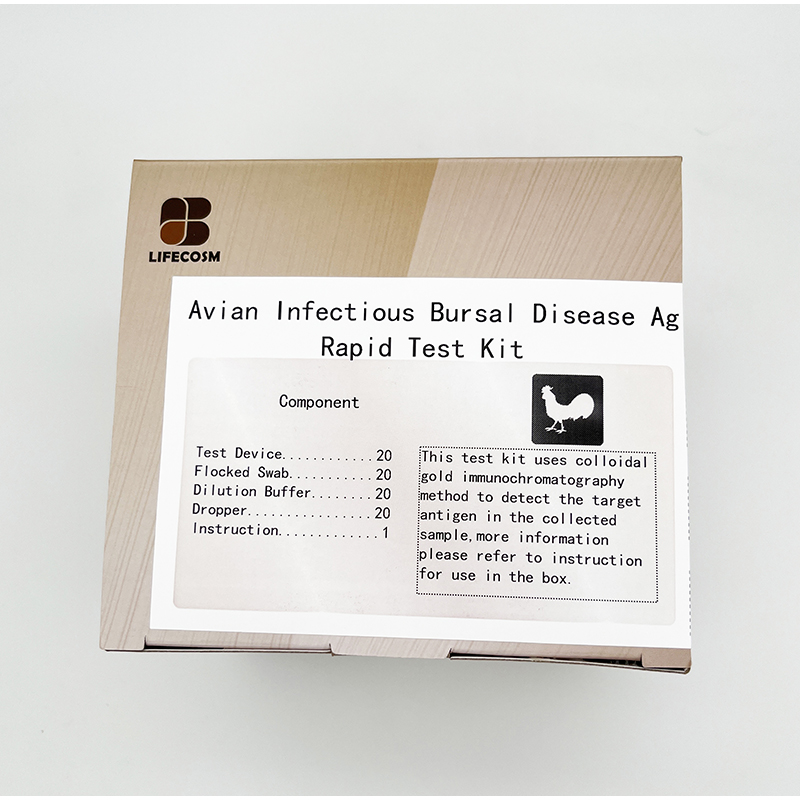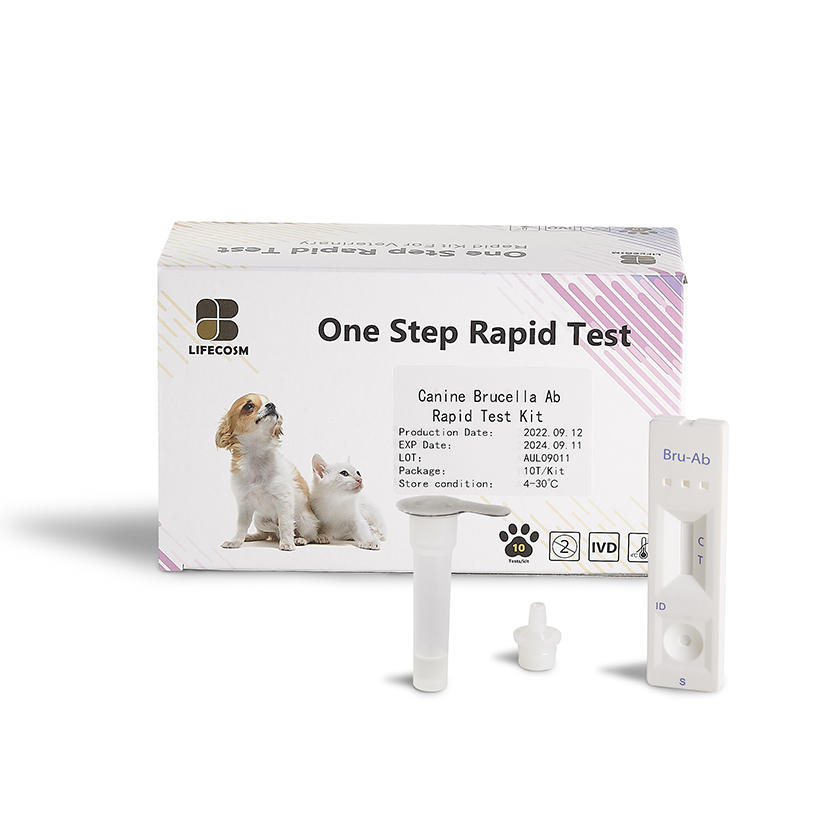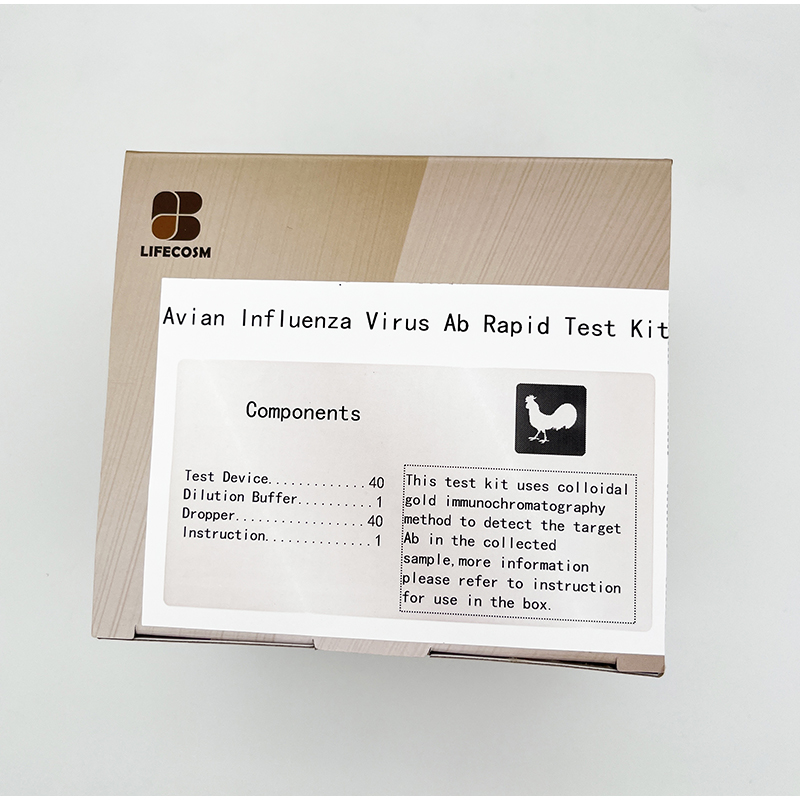
Products
Heart And Worm Tablets For Dogs - Lifecosm Avian lnfectious Bursal Disease Ab Rapid Test Kit for veterinary diagnostic test – Lifecosm
Heart And Worm Tablets For Dogs - Lifecosm Avian lnfectious Bursal Disease Ab Rapid Test Kit for veterinary diagnostic test – Lifecosm Detail:
Avian lnfectious Bursal Disease Ab Rapid Test Kit
| Avian lnfectious Bursal Disease Ab Rapid Test Kit | |
| Summary | Detection of specific Antibody of Avian lnfectious Bursal Disease within 15 minutes |
| Principle | One-step immunochromatographic assay |
| Detection Targets | Avian lnfectious Bursal Disease Antibody |
| Sample | Serum |
| Reading time | 10~ 15 minutes |
| Quantity | 1 box (kit) = 10 devices (Individual packing) |
| Contents | Test kit, Buffer bottles, Disposable droppers, and Cotton swabs |
| Caution | Use within 10 minutes after openingUse appropriate amount of sample (0.1 ml of a dropper)Use after 15~30 minutes at RT if they are stored under cold circumstances
Consider the test results as invalid after 10 minutes |
Information
Clinical signs
Disease may appear suddenly and morbidity typically reaches 100%. In the acute form birds are prostrated, debilitated and dehydrated. They produce a watery diarrhea and may have swollen feces-stained vent. Most of the flock is recumbent and have ruffled feathers. Mortality rates vary with virulence of the strain involved, the challenge dose, previous immunity, presence of concurrent disease, as well as the flock’s ability to mount an effective immune response. Immunosuppression of very young chickens, less than three weeks of age, is possibly the most important outcome and may not be clinically detectable (subclinical). In addition, infection with less virulent strains may not show overt clinical signs, but birds that have bursal atrophy with fibrotic or cystic follicles and lymphocytopenia before six weeks of age, may be susceptible to opportunistic infection and may die of infection by agents that would not usually cause disease in immunocompetent birds.
Chickens infected with the disease generally have the following symptoms: pecking at other chickens, high fever, ruffled feathers, trembling and slow walking, found lying together in clumps with their heads sunken towards the ground, diarrhea, yellow and foamy stool, difficulty in excretion, reduced eating or anorexia.
The mortality rate is around 20% with death within 3–4 days. Recovery for survivors takes about 7–8 days.
The presence of maternal antibody (antibody passed to the chick from the mother) changes the disease’s progression. Especially dangerous strains of the virus with high mortality rates were first detected in Europe; these strains have not been detected in Australia.[5]
Order Information

Product detail pictures:



Related Product Guide:
We have been convinced that with joint attempts, the business enterprise between us will bring us mutual benefits. We could guarantee you product or service good quality and aggressive value for Heart And Worm Tablets For Dogs - Lifecosm Avian lnfectious Bursal Disease Ab Rapid Test Kit for veterinary diagnostic test – Lifecosm , The product will supply to all over the world, such as: Mauritius, Macedonia, Jamaica, Our company regards reasonable prices, high quality,efficient production time and good after-sales service as our tenet. We hope to cooperate with more customers for mutual development and benefits in future. Welcome to contact us.
In China, we have purchased many times, this time is the most successful and most satisfactory, a sincere and realiable Chinese manufacturer!


